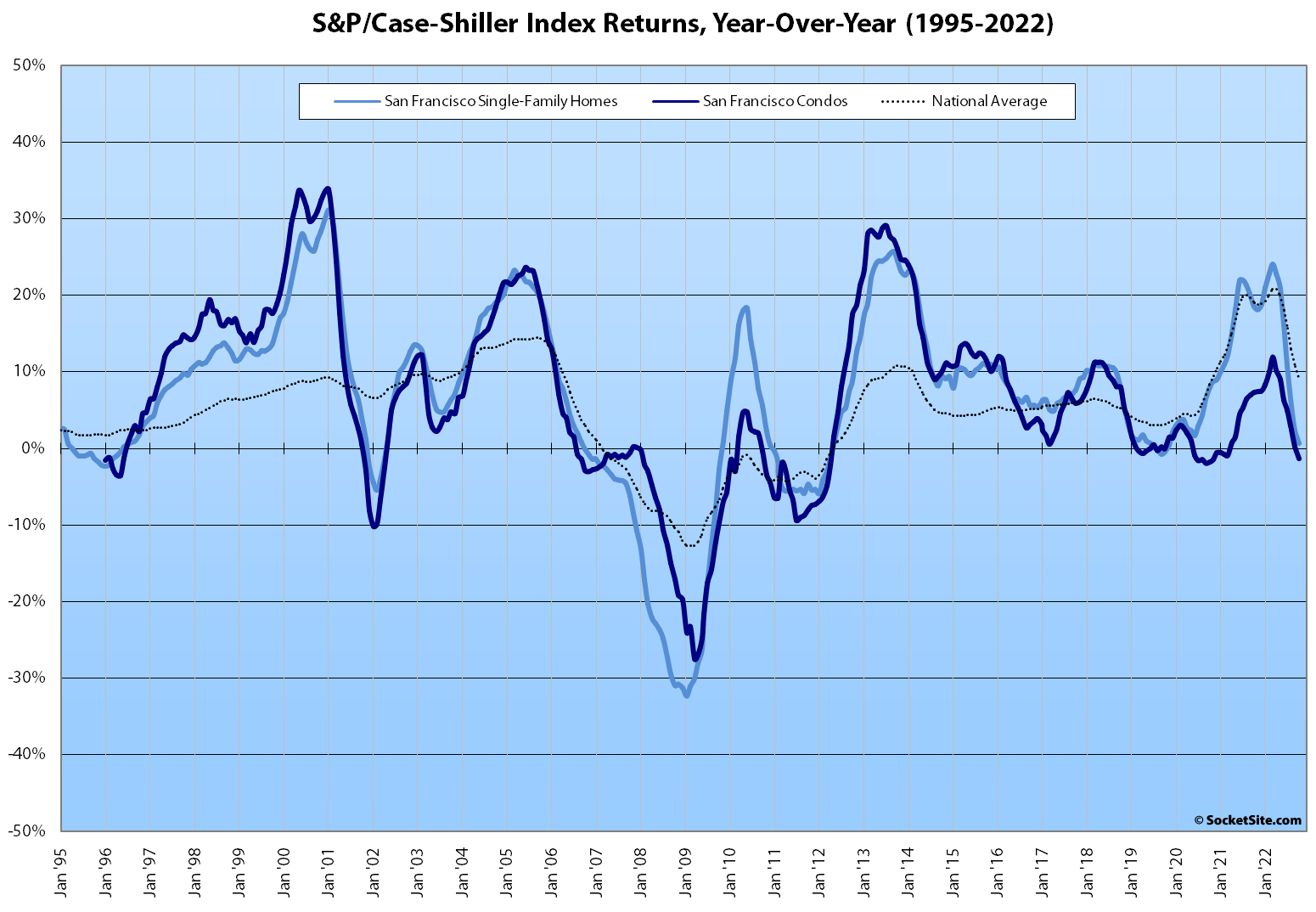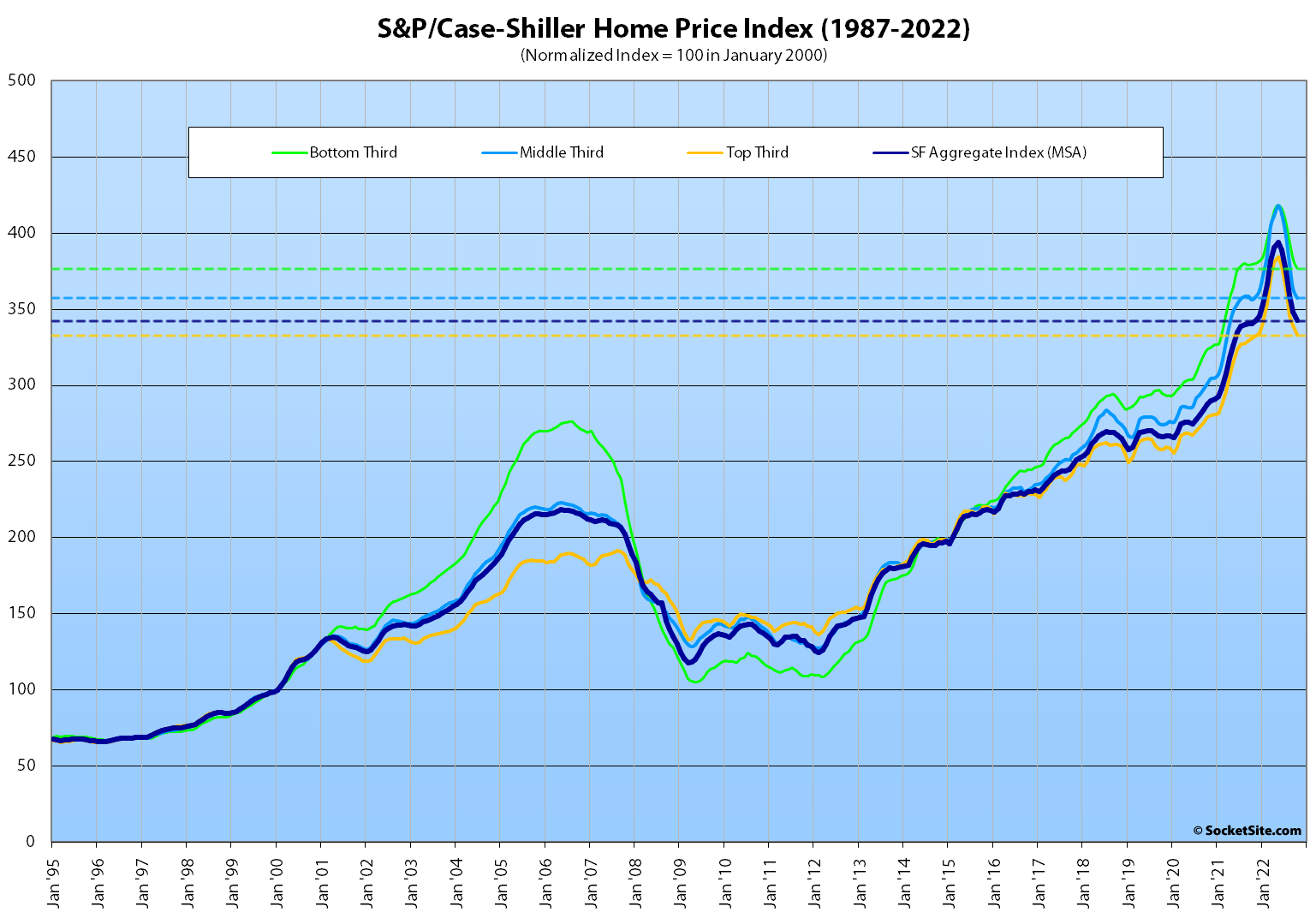The S&P CoreLogic Case-Shiller Index for single-family home values within the San Francisco Metropolitan Area – which includes the East Bay, North Bay and Peninsula – ticked down another 1.7 percent in October.
While the “San Francisco” index is still 0.6 percent “higher than it was at the same time last year,” it has dropped 13.0 percent since May and is poised to reveal a year-over-year decline next month, none of which should catch any plugged-in readers by surprise.
At a more granular level, the index for the least expensive third of the Bay Area market ticked down 1.3 percent in October for a year-over-year decline of 0.5 percent, representing the first year-over-year decline in over a decade; the index for the middle tier of the market ticked down 1.7 percent for a year-over-year gain of 0.3 percent, which should turn negative next month; and the index for the top third of the market also ticked down 1.7 percent in October, for a year-over-year gain of 0.7 percent, which is poised to go negative next month as well.
The index for Bay Area condo values, which remains a leading indicator for the market as a whole, ticked down 1.6 percent in October and was down 1.3 percent on a year-over-year basis, that’s versus year-over-year gains of 7.6 percent, 6.4 percent and 6.1 percent in Los Angeles, Chicago and New York respectively.
And nationally, Miami continued to lead the way with respect to exuberantly indexed home price gains, up 21.0 percent on a year-over-year basis, followed by Tampa (up 20.5 percent) and Charlotte (up 15.0 percent), with a 0.5 percent drop in the national index in October and the indexes for San Francisco and Las Vegas (down 1.8 percent), followed by Phoenix (down 1.6 percent), having dropped more than any other major metropolitan areas.
Our standard SocketSite S&P/Case-Shiller footnote: The S&P/Case-Shiller home price indices include San Francisco, San Mateo, Marin, Contra Costa and Alameda in the “San Francisco” index (i.e., greater MSA) and are imperfect in factoring out changes in property values due to improvements versus appreciation (although they try their best).



While I understand the gist of this post is focused on the direction of the index, it appears to be the case that the “San Francisco” index is still over 8 percent higher than it was at the same time prior to the onset of the pandemic. Yawn.
You’re missing the point. Anything less than 40% YOY growth signifies impending housing market Armageddon!
Slowly and then suddenly…
UPDATE: As projected, the Bay Area index has now dropped on a year-over-year basis and conitues to trend down.